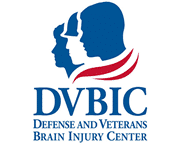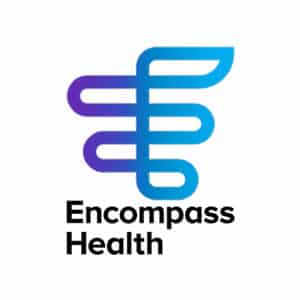Post-Concussion: Functional Considerations for Improving Neural Timing with IM
Presented by Dr. Lynn Carlson,
D.C., DACNB FACFN FABBIR

| CEUs | Course Meets Requirements for: 1.0 Contact Hours SLP(ASHA) = 0.1 CEUs 1.0 Contact Hours OT/OTA (AOTA) = 0.1 CEUs PT/PTA & Other Disciplines Not Listed Above: If your discipline or state is not listed above, you may submit paperwork to your state board or association for CEUs if they allow you to do so. Please check with your state board/association prior to registering for this course.e. |
| Course Type | OnDemand |
| Prerequisites | None - Introductory Course |
| Price | FREE |
Summary: An overview of the neuroscience and clinical application of Interactive Metronome (IM) as part of a concussion rehabilitation program.
Detailed Description: Concussion injury is a significant cause of physical, cognitive, and emotional challenges for people across all age groups. While many people recover within a few weeks, research suggests up to 33% of individuals suffering a sports-related mild traumatic brain injury continue to have persistent concussion symptoms affecting their overall function and quality of life. Therapies that address underlying mechanisms affecting central processing and neural synchronization are important components of an individual’s recovery. Interactive Metronome provides integration of sensory and motor processing for improved neural timing and should be considered as part of a rehabilitation program in people with post-concussion symptoms.
You’ll Learn: This course will provide an overview of the neural circuits involved in central processing and novel approaches for applying Interactive Metronome to improve neural synchronization.
CEUs: *Contact hours/ASHA and AOTA CEUs are offered pending successful completion of a written exam at the end of the course.
- Introduction and disclosures
- Review of current concussion definition, statistics, and understanding of neurometabolic effects following concussion
- Neuroscience of sensory-motor entrainment and principles of neuroplasticity
- Metabolic considerations in concussion patients performing IM therapy
- Introducing salience and relevance in IM protocols during stages of progressive rehabilitation
- Applications using Interactive Metronome to improve neural timing in concussed patients
- The benefits of IM Home program for continued training
- Post-Test
- Description
-
Summary: An overview of the neuroscience and clinical application of Interactive Metronome (IM) as part of a concussion rehabilitation program.
Detailed Description: Concussion injury is a significant cause of physical, cognitive, and emotional challenges for people across all age groups. While many people recover within a few weeks, research suggests up to 33% of individuals suffering a sports-related mild traumatic brain injury continue to have persistent concussion symptoms affecting their overall function and quality of life. Therapies that address underlying mechanisms affecting central processing and neural synchronization are important components of an individual’s recovery. Interactive Metronome provides integration of sensory and motor processing for improved neural timing and should be considered as part of a rehabilitation program in people with post-concussion symptoms.
You’ll Learn: This course will provide an overview of the neural circuits involved in central processing and novel approaches for applying Interactive Metronome to improve neural synchronization.
CEUs: *Contact hours/ASHA and AOTA CEUs are offered pending successful completion of a written exam at the end of the course.
- Agenda
-
- Introduction and disclosures
- Review of current concussion definition, statistics, and understanding of neurometabolic effects following concussion
- Neuroscience of sensory-motor entrainment and principles of neuroplasticity
- Metabolic considerations in concussion patients performing IM therapy
- Introducing salience and relevance in IM protocols during stages of progressive rehabilitation
- Applications using Interactive Metronome to improve neural timing in concussed patients
- The benefits of IM Home program for continued training
- Post-Test
Effects of Interactive Metronome Therapy on Cognitive Functioning After Blast-Related Brain Injury,
A Randomized Controlled Pilot Trial
 “Among soldiers treated with IM therapy in this study, there were some significant benefits measured by performance on well-defined cognitive tests, relative to those who received standard care without IM”.
“Among soldiers treated with IM therapy in this study, there were some significant benefits measured by performance on well-defined cognitive tests, relative to those who received standard care without IM”.
download study
Neuropsychology
Lonnie A. Nelson, Margaret MacDonald, Christina Stall, and Renee Pazdan
Online First Publication, September 23, 2013. doi: 10.1037/a0034117
Over 40,000 of the most prestigious clinicians, hospitals & universities use Interactive Metronome
Interactive Metronome for Concussion Rehabilitation
Concussion Rehab Case Studies using Interactive Metronome
 Made good cognitive and physical gains with Interactive Metronome
Made good cognitive and physical gains with Interactive Metronome
Sam is a forty-two-year-old male that had a left arteriovenous malformation (AVM) with bleeding. Cognitive assessments showed he had severe deficits in initiation, immediate and delayed memory for both written & verbal, insight, safety awareness, problem-solving and generating options, attention, and concentration with internal and external distraction, attention to visual details, planning, organizing, and sequencing skills, processing speed, and math skills. He often externally blamed & confabulated. He also had physical deficits, including left upper & lower extremity hemiparesis & neglect, decreased balance, bilateral integration, coordination, and endurance. Sam was able to make good cognitive & physical gains through a comprehensive rehabilitation program, which included IM training. Read More

Rehabilitation of TBI with Interactive Metronome
Adam is a 28-year old made who suffered an anoxic event along with a seizure due to drug interactions leading to a wide array of both cognitive deficits and physical deficits.
After achieving his short-term IM rehabilitation goals, he had a post-test score of 32.5 ms, showing a 75% improvement from his initial score of 129.8 ms and also made a substantial improvement on the Benton Controlled Oral Word Association Test, increasing from the 30th percentile to the 92nd percentile and his Championship Season subtest increased from 40% accuracy to 60% accuracy. On Adam’s Post IM survey, he indicated that he is now better able to concentrate, focus, and understand key points more clearly. Adam also said that he is less impulsive and has more patience.
Read More
 IM Helps TBI Patient Regain Heel Strike
IM Helps TBI Patient Regain Heel Strike
Kara is a 23-year old female who suffered a severe TBI, secondary to a MVA. She had significant impairments in strength, coordination, motor planning, balance, and gait. Kara had received extensive rehab services prior to being referred to physical therapy again because she was complaining of right knee pain and balance deficits. After 18 sessions of Interactive Metronome, Kara’s gait pattern improved significantly. She was able to achieve heel strike 100% of the time when walking on a level surface, did not fatigue, and decreased knee hyperextension significantly. She reports her right knee pain is resolved with functional mobility. The Three-Minute Walk Test was administered at the end of treatment, and Kara can now walk 600 feet in the time allowed. Read More








